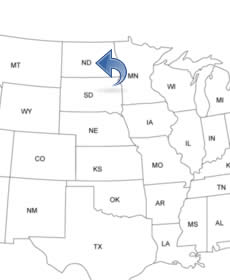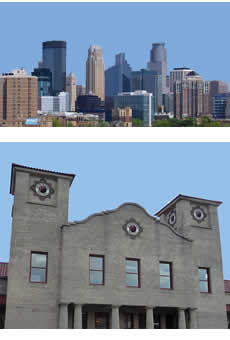NORTH DAKOTA PEOPLE SEARCH!
- ✔ Contact Info
- ✔ Phone Numbers
- ✔ Criminal Records
- ✔ Income Info
- ✔ Neighbors
- ✔ People's Age
- ✔ Property Ownership
- ✔ And Much More
Bismarck, North Dakota
Bismarck is one of the safest cities in America. The city has two hospitals and five colleges and a university. The city has several golf courses and a large park system. Bismarck is ranked among the top 10 as America's Least Stressful Small City.
To See And To Do In Bismarck
- Lewis and Clark Riverboat
- North Dakota State Capitol
- Dakota Zoo In Sertoma Park
- Downtown
- Chief Looking's Village
- Buckstop Junction Missouri Valley Fairgrounds
- Camp Hancock State Historic Site
- North Dakota Heritage Center
- Double Ditch Indian Village
- Old Governor's Mansion
- Golf
- Fishing
- Gateway Fashion Mall
- Kirkwood Mall
History Of Bismarck - Timeline
In 1738, La Verendrye, a French explorer came to the present-day Bismarck. It is the first recorded visitor to the present-day Bismarck.
In 1804, Lewis and Clark explored the region. In 1820, traders began to ply the Missouri River in steamboats and an outpost of the American Fur Company was established near Bismarck. In 1871, the area was permanently settled.
In 1872, the city was formed as Edwinton after a chief engineer for the Northern Pacific Railway company named Edwin Ferry Johnson. In 1873, the railroad reached the town and the name was changed to Bismarck. It was changed to honor the German chancellor Otto von Bismarck in an effort to attract German immigrants. Also in 1873, the Bismarck Tribune, the first daily newspaper, was printed.
In 1874, gold was discovered in South Dakota, in the Black Hills. Many gold-seekers came to outfit themselves, many stayed in the town and Bismarck experienced its first boom.
In 1875, Bismarck was incorporated. In 1877, the fire department was established. In 1882, a railroad bridge was built across the Missouri River at Bismarck. In 1883, Bismarck became the capital of the state of North Dakota and in 1884, the North Dakota State Capitol building was completed.
In 1890, nearly 50 percent of the population was foreign-born. Most of them came from Sweden, Germany, Norway, Russia, Canada, England, and Ireland. In 1898, a fire destroyed much of the city.
In 1904, a streetcar line was established. In 1911, the McKenzie Hotel, later renamed Patterson Hotel, opened New Year’s Day. In 1914, the City Auditorium, now the Belle Mehus, opened. In 1922, the first vehicular bridge to span the Missouri River was completed and named Liberty Memorial Bridge. In 1930, the state capitol was destroyed by a fire. In 1934, a new state capitol building was completed.
In 1952, the city's worst flood in many years resulted in 200 homes were destroyed. In 1954, the shopping center Arrowhead Plaza opened. In 1965, the Grant Marsh Bridge was completed as part of Interstate 94. In 1971, the Kirkwood Mall opened. In 1979, the Gateway Mall opened.

